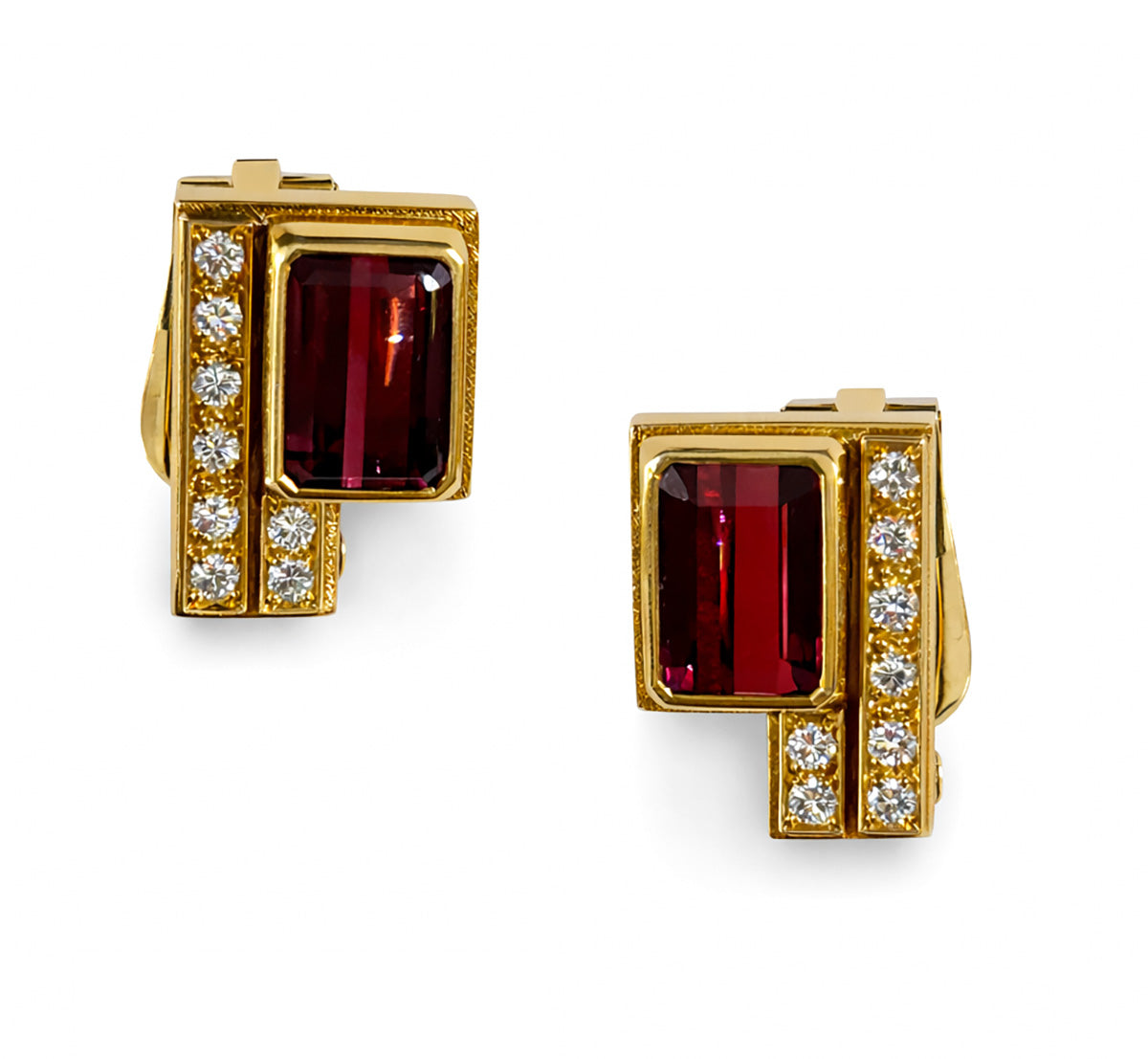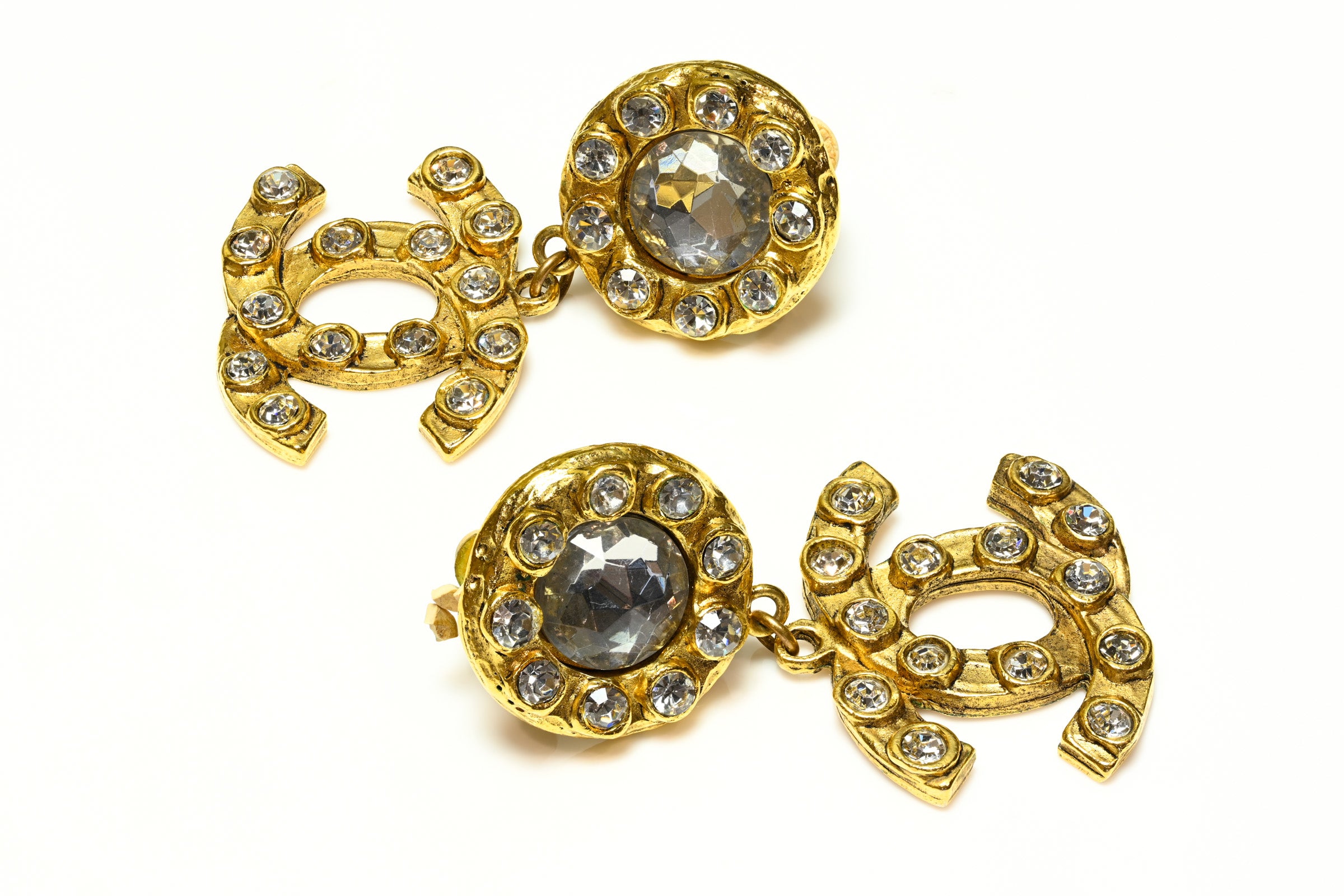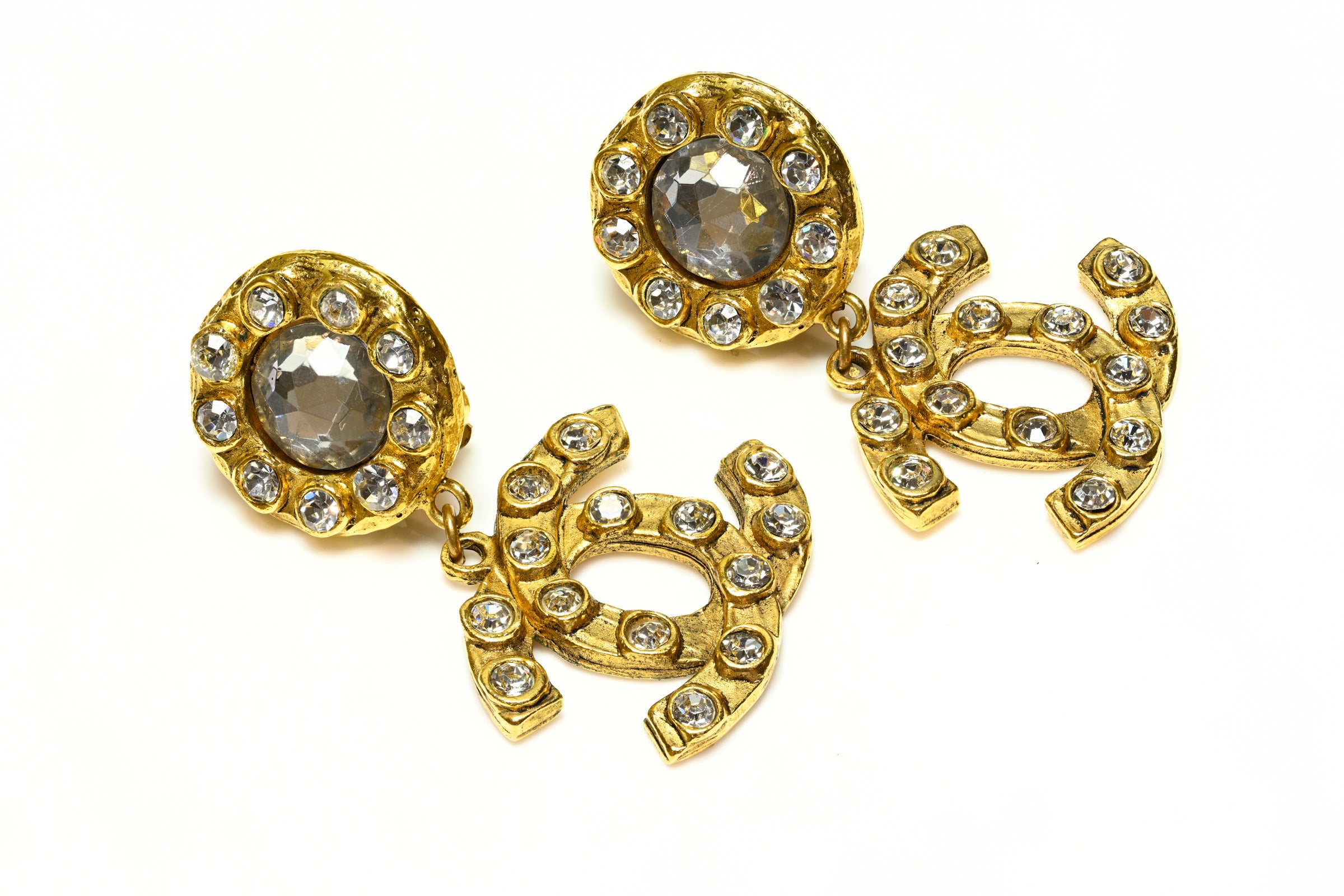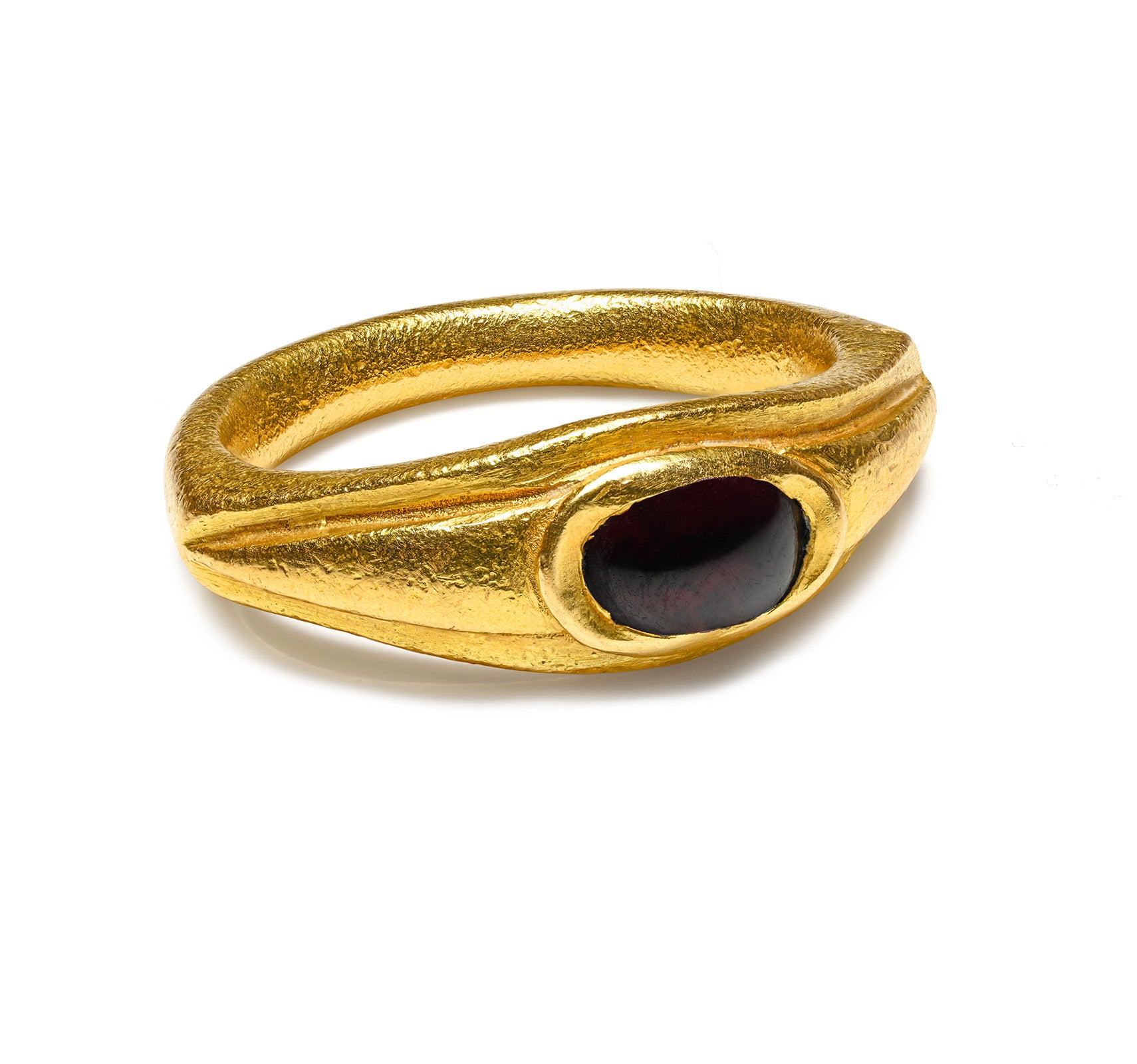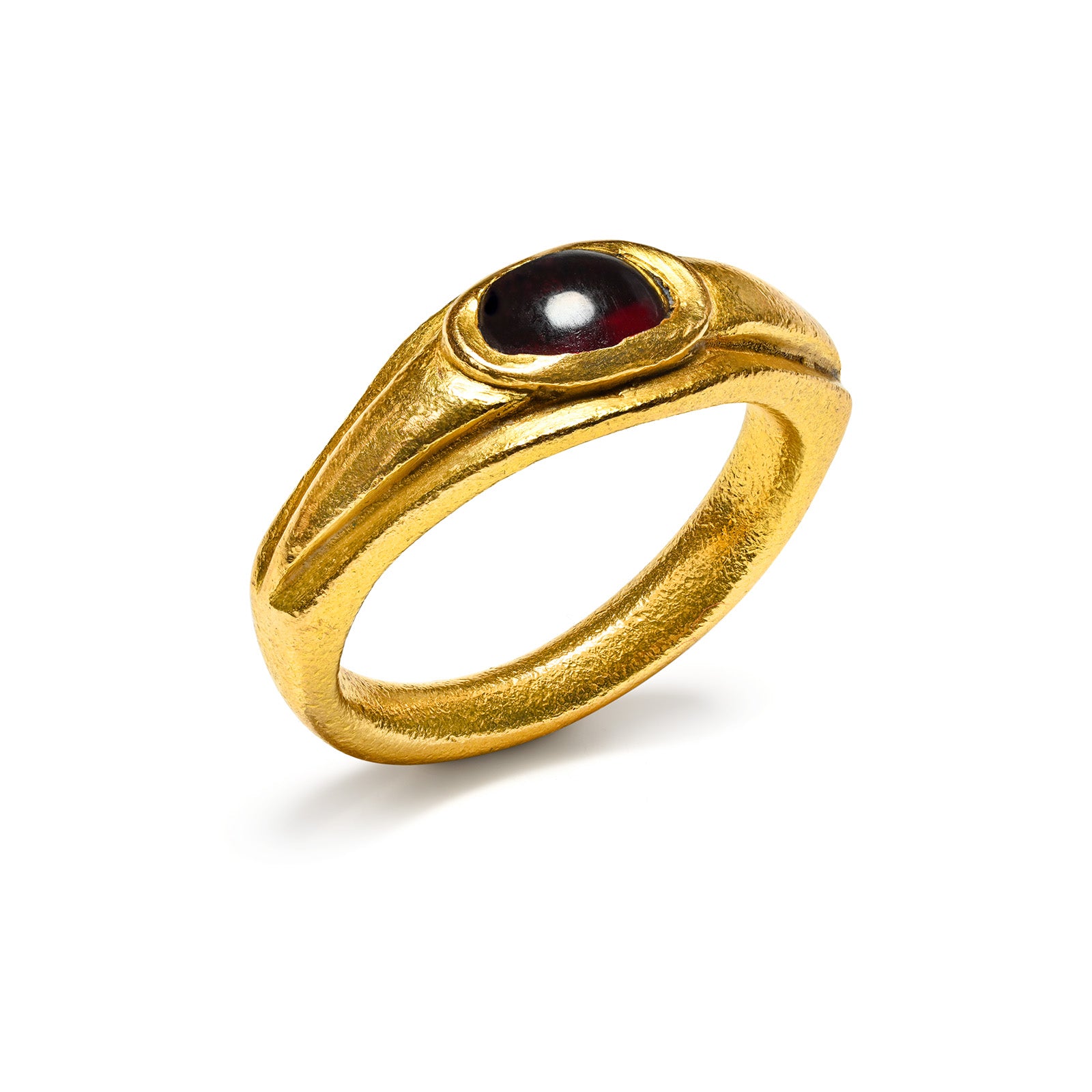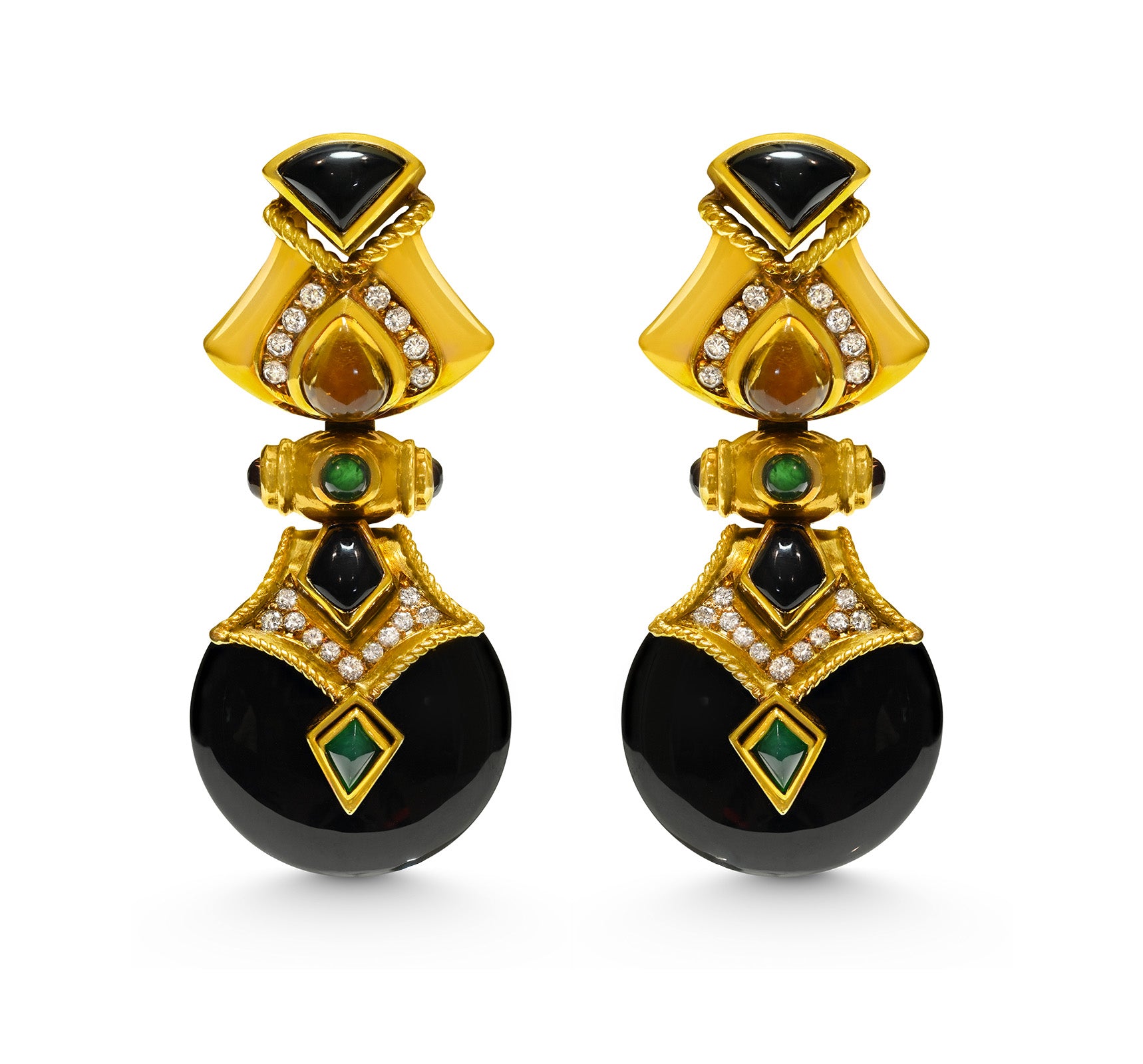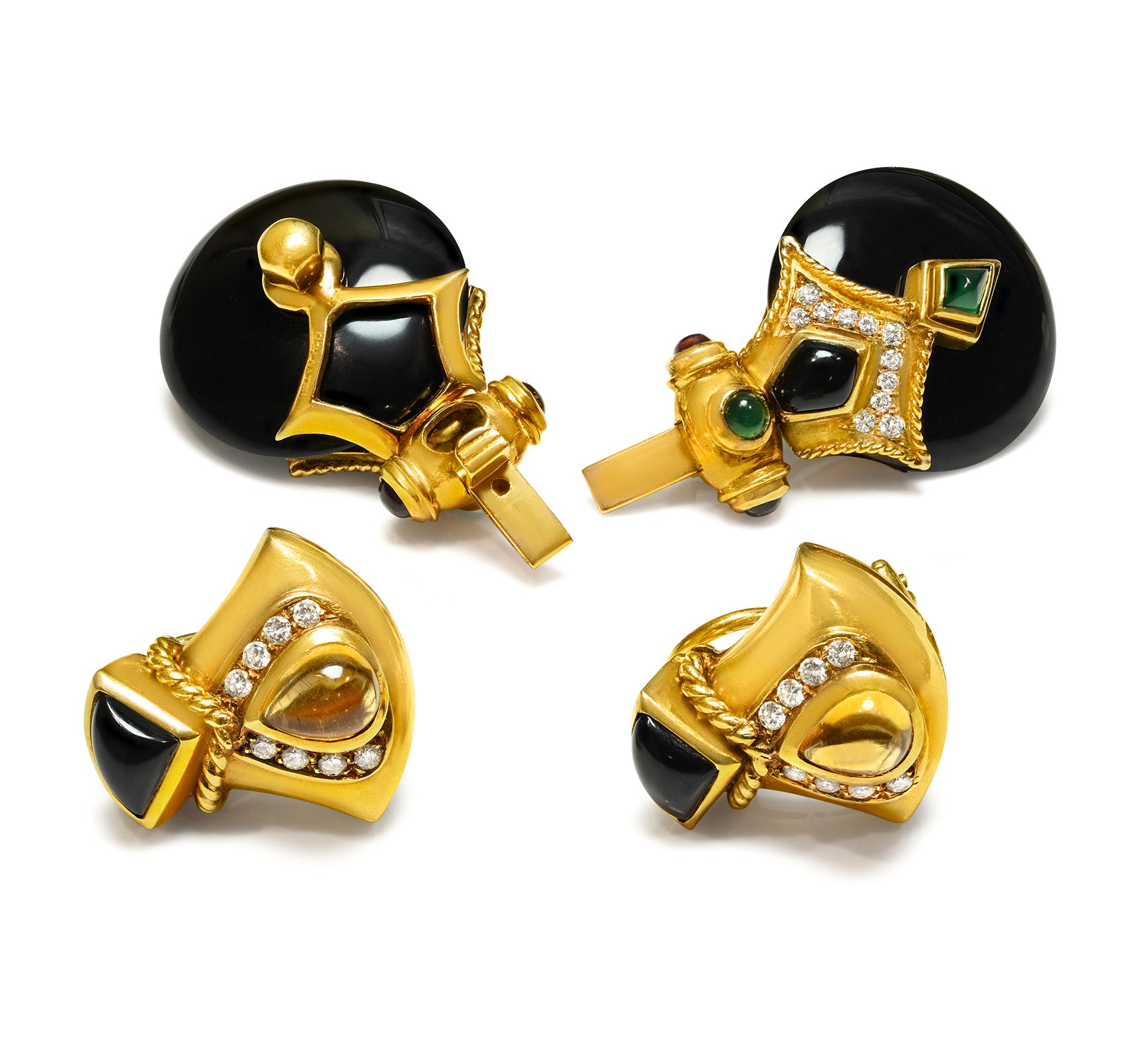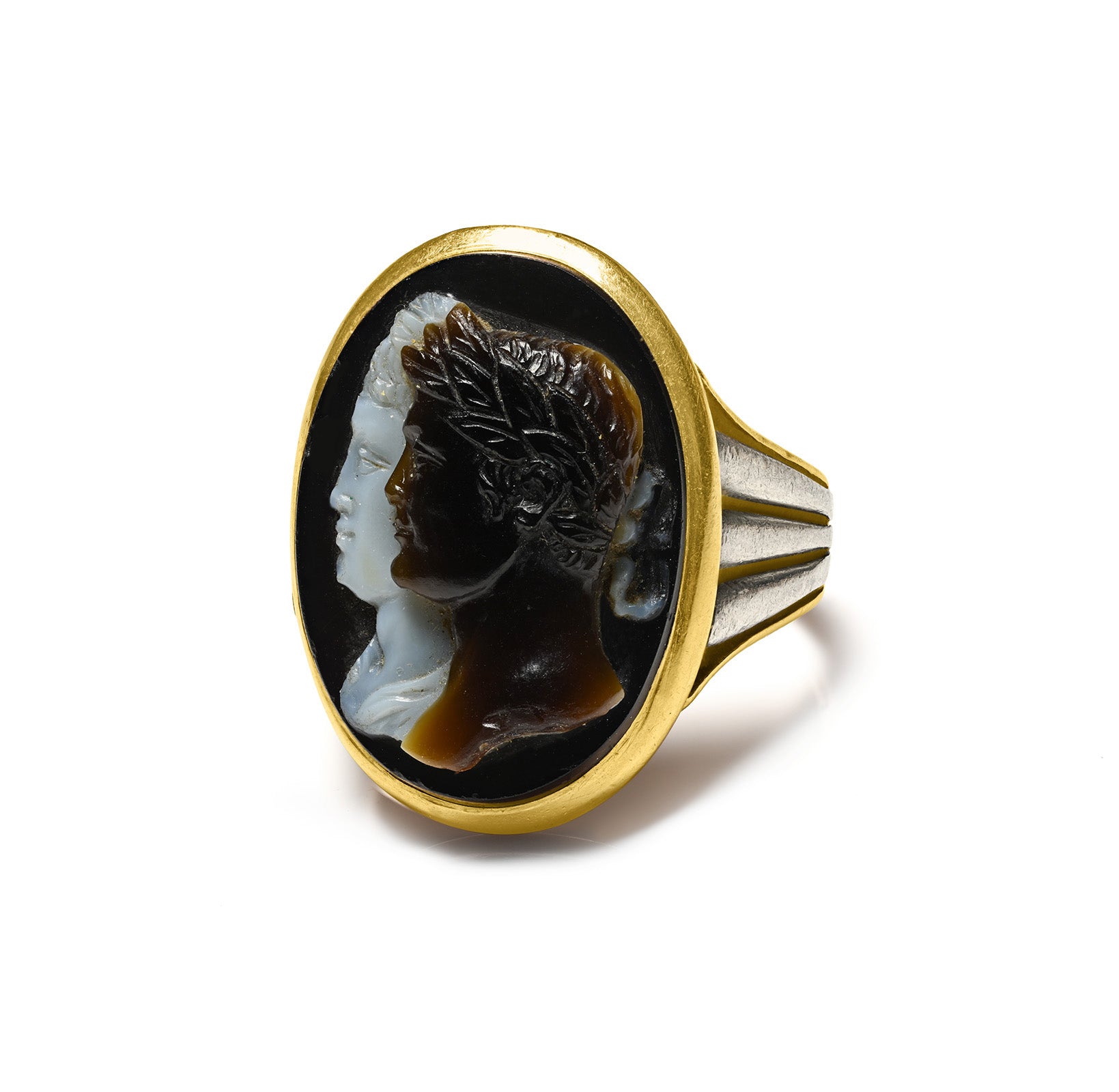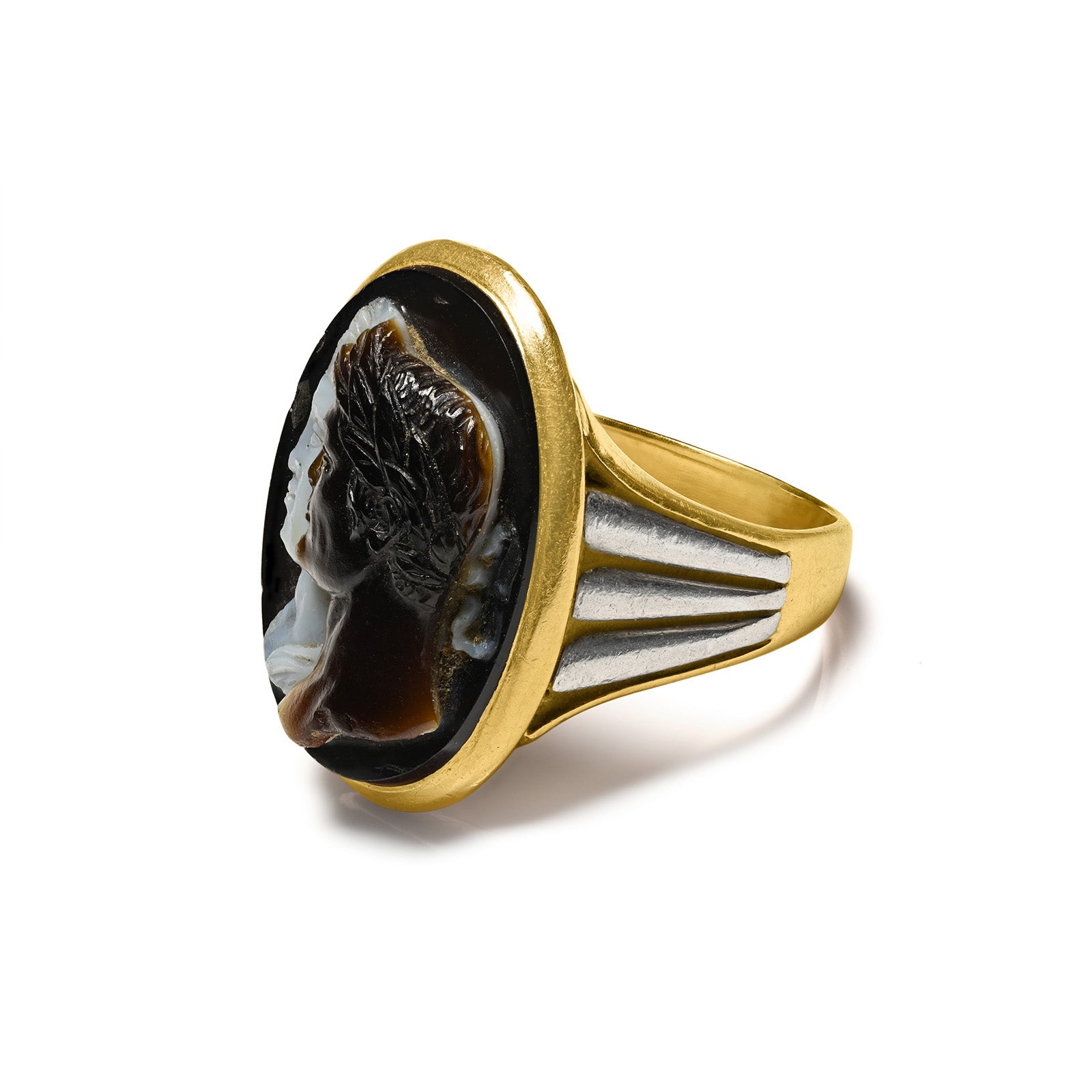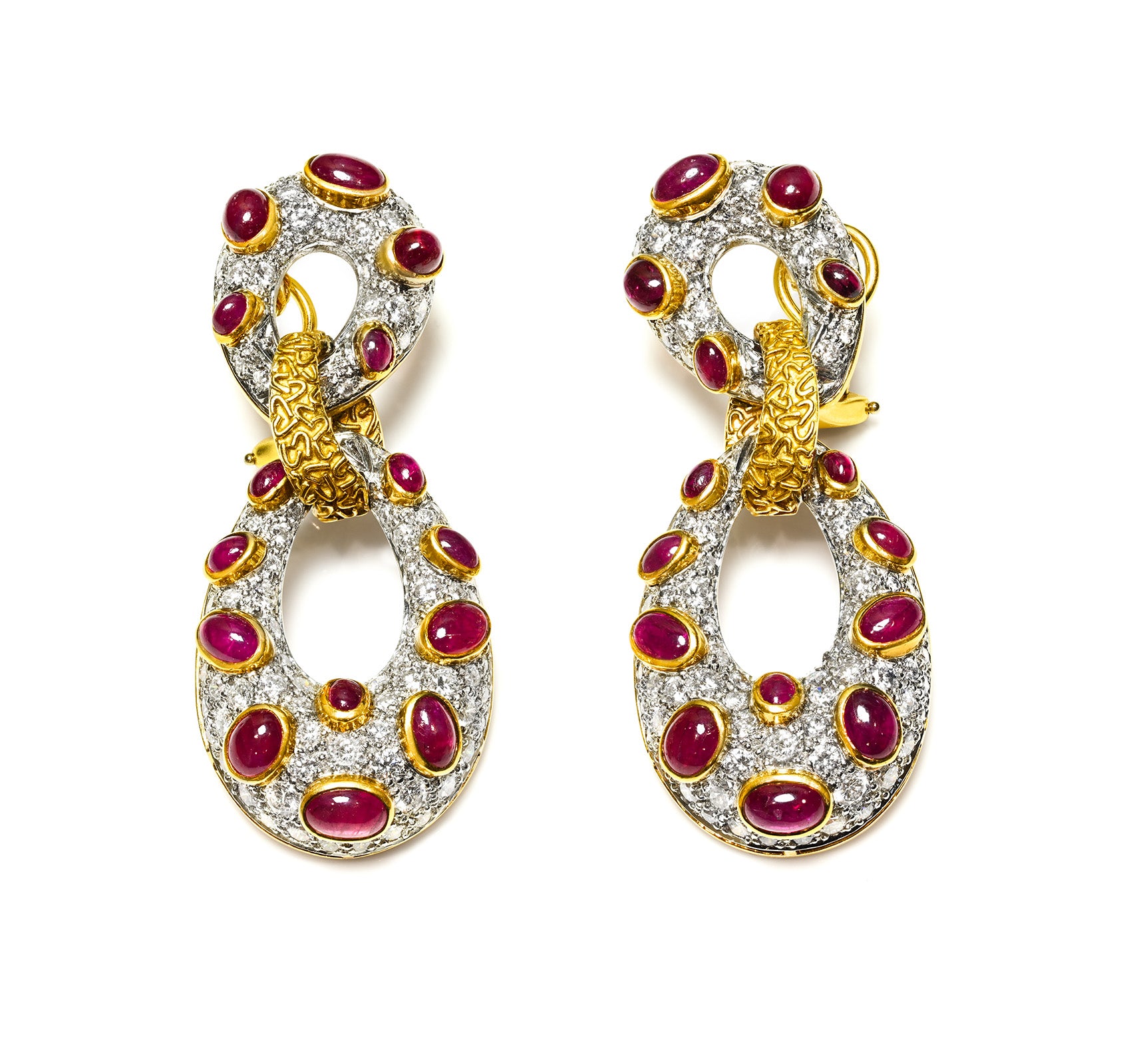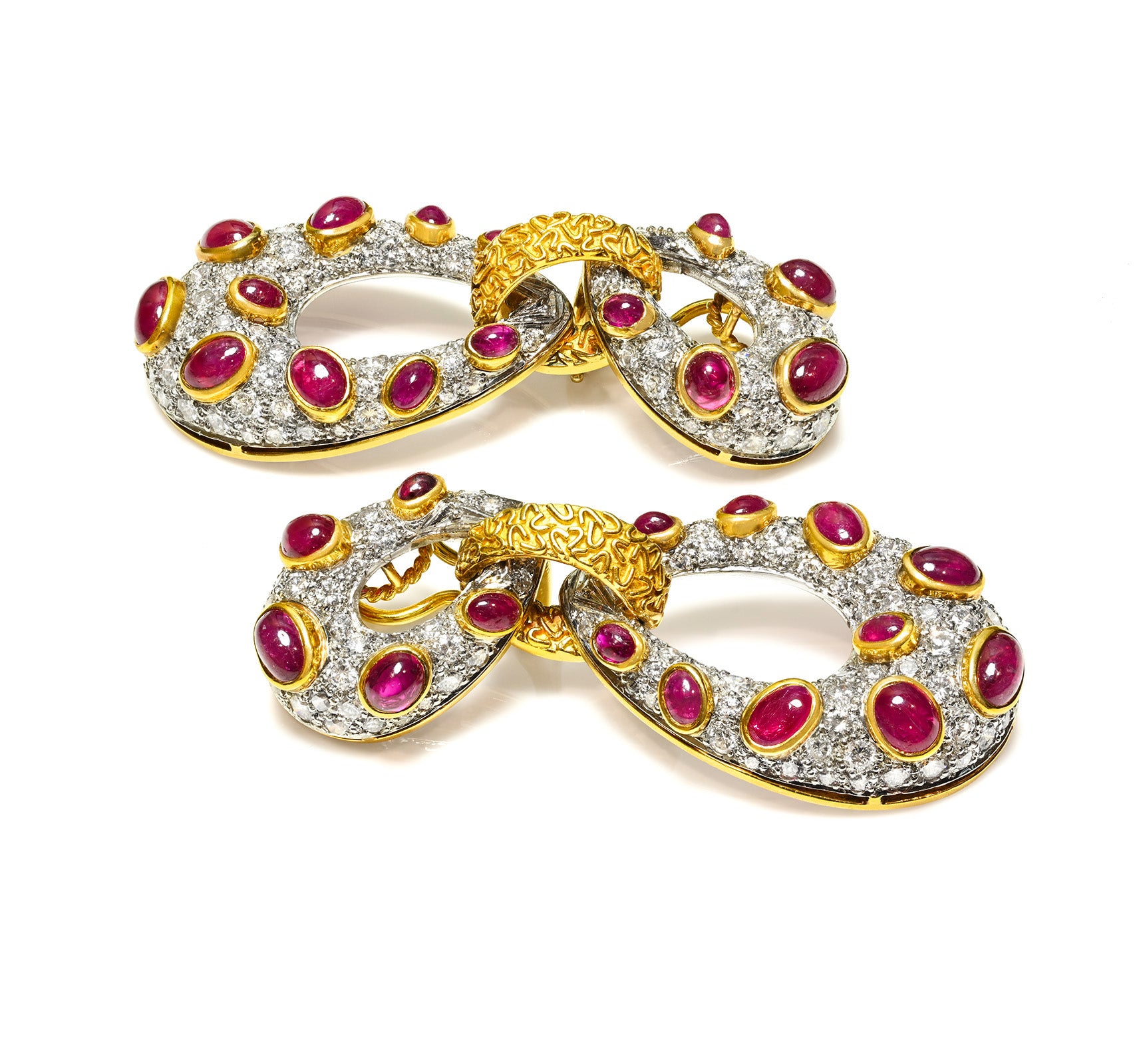
Ottoman Jewelry: A Glimpse Into The Empire’s Luxurious Past
Jewelry played an essential role in diplomatic relations and served as a powerful symbol of authority within the lavish world of Ottoman royalty and statecraft.
Sultans, viziers, ambassadors, and the women of the harem all displayed their status prominently through intricate jewelry pieces, meticulously chosen to capture attention and demonstrate prestige.
The remarkable beauty of Ottoman jewelry was no accident. Anatolia, the birthplace of the Ottoman Empire, was historically a vibrant hub for human advancement, agriculture, and cultural fusion dating back to the Neolithic era, home to some of the oldest archeological sites known today.
Indeed, Ottoman jewelry vividly reflects the empire’s unique blend of cultures and artistic achievements. Rich symbolism, intricate motifs, and masterful craftsmanship characterize the jewelry of this era, encapsulating a period when elegance and sophistication were celebrated and highly sought after.
Jewelry as Cultural Fusion
Established by Osman I in 1299, the Ottoman Empire reached its peak during the 16th and 17th centuries under the rule of Suleiman the Magnificent—a golden age for the arts, with jewelry being no exception. The Ottoman Empire thrived on diversity, drawing inspiration from Byzantine, Persian, Arabic, and European traditions.
Consequently, Ottoman jewelry designs embody this cultural synthesis, distinguished by complexity, colorfulness, and exceptional creativity, making them uniquely significant within global jewelry history.
A notable aspect of Ottoman jewelry compared to its European counterparts is its diverse use of metals. While European jewelry often favored uniformity, Ottoman artisans celebrated variety and emphasized the intrinsic beauty of both metals and gemstones. Rather than adhering to strict symmetry, jewelers favored the organic characteristics and natural irregularities of their materials.
Natural motifs were widely employed, reflecting the popular aesthetic of the period. Birds, flowers, and other elements of nature frequently adorned Ottoman jewelry, imparting aesthetic value and symbolic meanings.
Throughout the Empire’s expansion, jewelry production diversified alongside the availability of precious stones and metals. Influences from the West, especially from the 18th century onward, led to increasingly bold and elaborate designs.
Ottoman women's beauty was often accentuated by accessories such as headdresses, tiaras, belt buckles, bracelets, and earrings—each piece meticulously crafted to highlight personal allure and status.
Moreover, jewelry wasn’t limited strictly to adornment but extended to various functional objects, including weaponry, hairstyling accessories, clothing embellishments, dining utensils, entertainment items like chess sets, and personal belongings such as ornate pens and candy boxes.
"As the Ottoman state evolved into a global empire, the use of jeweled objects permeated all aspects of everyday culture, becoming inextricably linked with rituals secular and religious," explains Prof. Gül İrepoğlu in her book, Imperial Ottoman Jewelry: Reading History Through Jewelry.
Aigrettes
According to Prof. Gül İrepoğlu, the aigrette was the most unique jewelry piece defining the majesty and power of Ottoman sultans—a subject she believes deserves deeper exploration.
„Aigrettes of the late 16th and early 17th centuries reflect the empire’s glory in both craftsmanship and the vibrant colors of precious stones. These remarkable pieces were often complemented by jeweled daggers, saddles, and equestrian accessories. Sparkling with diamonds, emeralds, rubies, and turquoise, Ottoman aigrettes vividly symbolized the state’s immense wealth, well into the late 17th century,” İrepoğlu writes.
Both the Sultan and prominent women of the Harem adorned themselves with aigrettes. Their distinctive form symbolized authority, and sultans were known to bestow these priceless items upon individuals as prestigious gifts or tokens of honor.
During ceremonial processions, even horses wore exquisite aigrettes, reflecting the grandeur of Ottoman pageantry.
Pins
Pins were significant elements in Ottoman women's headdresses. Sometimes, these delicate jewels were used to decorate dress brooches, crests, or placed directly into the hair, enhancing the elegance of the wearer.
Earrings
Earrings have been a staple accessory since ancient times, appearing in diverse forms ranging from subtle pearl drops to elaborately designed pendants. In Turkish jewelry culture, earrings held particular significance due to their role in accentuating the beauty of Ottoman women's hairstyles and attire.
Gold Bangles
Simple gold bangles held dual significance for Ottoman women, serving not only as decorative accessories but also as practical investments. Palace women often purchased these bracelets, appreciating their flexibility as convertible assets. A variety of designs were popular, with twisted bangles being especially favored.
Rings
Ottoman women favored signet rings adorned with semi-precious stones such as carnelian, amethyst, and jade, as well as precious gems like rubies and emeralds. These rings often served both aesthetic and symbolic purposes, acting as marks of identity or status.
Chokers & Long Necklaces
Long necklaces and chokers were essential elements of Ottoman jewelry. Rich women commonly wore necklaces made of long gold or silver chains or pearl strings adorned with gold coins.
In the 18th century, the British Ambassador in Istanbul vividly described Hafize Sultan, wife of Sultan Mustafa II, as wearing a strand of pearls that reached her knees, complemented by two emerald chains and a diamond the size of a turkey egg.
Belts
Belts richly decorated with mother-of-pearl, silver, crystal, ivory, or gold formed fundamental pieces in Ottoman women's wardrobes. Belt buckles often featured intricate geometric or floral patterns, embellished with diamonds, rubies, turquoise, and emeralds. These ornate belts were fashionably worn either around the waist or lower, at the hips.
Famous Ottoman Jewelry Pieces
The Sword of Osman
The founder of the Ottoman Empire, Osman I, was honored with a legendary golden sword known as the Sword of Osman. This famed sword was gifted to Osman by his father-in-law, Sheikh Edebali, a revered mentor. Decorated extensively with intricate metalwork and precious gems, this sword symbolizes both authority and legacy.
The Emerald Topkapi Dagger
Another masterpiece from the Ottoman jewelry tradition is the renowned Emerald Topkapi Dagger. Initially intended as a diplomatic gift from Sultan Mahmud I to the Iranian ruler Nadir Shah, the dagger never reached its destination. Nadir Shah was assassinated just as the Sultan's envoy entered Iran, prompting the return of the dagger and other lavish gifts to the Topkapi Palace.

The Topkapı Dagger (Source: Hajotthu via Wikimedia Commons)
The dagger owes its name to three extraordinary Colombian emeralds of remarkable color, size, and clarity set prominently on its handle. At the center sits a cushion-cut rectangular emerald, flanked by two pear-shaped emeralds. Complementing these spectacular gems, the sheath is meticulously decorated with 31 symmetrically arranged white diamonds.
The Spoonmaker’s Diamond
Exhibited to this day in Istanbul's Topkapi Palace, The Spoonmaker's Diamond remains shrouded in mystery. Despite its exceptional clarity and beauty, the origins of this iconic diamond are uncertain. Neither the person who brought this precious gem to Istanbul nor the circumstances of its arrival have ever been clearly established.
The diamond, weighing an impressive 86 carats and fashioned into a pear shape, is set in solid silver and surrounded by a halo of old-cut diamonds. Although remarkable in size, it pales in comparison to the immense, jewel-encrusted thrones of the Ottoman Sultans—most notably Sultan Ahmed I's throne.
Jewelry and Palace Life
In the Ottoman palace, jewelry transcended mere adornment, becoming a powerful reflection of wealth and authority. Artisans crafted priceless items such as swords, daggers, ceremonial dishes, cups, and even ornate Quran boxes. Each creation showcased Ottoman splendor, enriching the majestic atmosphere of the imperial court.
The sultans often praised and honored the artisans, known as Kapıkulu artists, who worked in royal workshops. These masterpieces were not only displayed prominently but were strategically used as diplomatic gifts, enhancing political alliances and relationships.
Within the Ottoman Empire's cultural and political framework, jewelry thus became a vivid emblem of prestige and influence, deeply embedded in palace traditions and ceremonies.
Ottoman Jewelry Across Different Regions
With the exception of certain pieces preserved within the Sultan's palace treasury, few jewelry artifacts from the early Ottoman period have survived. As a result, the precise evolution of jewelry styles and techniques remains somewhat unclear. However, as the Empire expanded into new regions, distinct yet closely related jewelry styles emerged, making regional pieces often difficult to differentiate clearly.
An excellent example of such widespread jewelry is the Kirdan necklace, popular in the 19th century across a vast area stretching from North Africa through Asia Minor to the Levant. Although these necklaces share a common structure, the precise origin of each piece can typically only be determined through careful examination of their motifs and decorative patterns.
Another widespread piece was the triangular amulet, a popular fashion accessory during the second half of the 19th century. These amulets were crafted in various jewelry-making centers within the heart of the Empire, notably Istanbul, Damascus, and Sarajevo.
Belts were similarly widespread and shared common characteristics across the Ottoman domain, from Armenia to the Balkans. Regions neighboring Ottoman territories, such as Greece and Bulgaria, also developed jewelry strongly influenced by Ottoman aesthetics, reflecting centuries of shared cultural history.
Ottoman influence extended significantly into North Africa, especially within urban centers, where local women often desired jewelry reminiscent of styles worn by ruling Ottoman Bey families. Nevertheless, traditional Berber/Amazigh symbols and techniques persisted in local jewelry-making traditions.
Apart from Istanbul, the Empire featured numerous jewelry-making centers renowned for their skilled craftsmanship. Christian Armenian and Jewish silversmiths, in particular, earned high regard for their artistry. As the Ottomans developed an interest in European-style watchmaking, many European goldsmiths, watchmakers, and gem engravers relocated to Constantinople's foreign quarter, Galata, according to Wikipedia.
One unifying feature across Ottoman jewelry production was the presence of the tugra, a hallmark used extensively throughout the Empire. Significant jewelry centers included Bosnia in the Balkans, as well as Damascus, Aleppo, and several cities in Anatolia.
Hâzine-i Humâyûn – The Imperial Treasury
Although renowned for exquisite jewelry creations, the Ottoman Empire did not maintain a specific set of crown jewels passed down from ruler to ruler. Instead, it safeguarded an intriguing collection of precious jewels and ancient artifacts collectively known as the Hâzine-i Humâyûn or Imperial Treasury.
Prof. İrepoğlu describes this carefully protected treasury in her book:
„The first Treasury (Hâzine-i Humâyûn) was sealed, and the seal entrusted initially to the Grand Vizier and subsequently to the Treasury Steward (Haznedâr). The Imperial Treasury was always under strict guard by the chief treasurer. Upon a sultan’s death, any jewelry personally acquired by the ruler (items not belonging to the crown) were cataloged in duplicate. These items, along with one copy of the ledger, were placed in an iron chest and securely stored within the Treasury.
The exterior door was always sealed with the black stone seal of Yavuz Sultan Selim (Selim I, known as ‘the Steadfast’). After returning victorious from his campaigns in Tabriz and Egypt, Sultan Selim I filled the treasury with immense wealth. He decreed that if any successor replaced this gold with copper coins, they should use their own seal. Otherwise, the treasury was to remain sealed with his seal. His command was dutifully obeyed until the empire's final days, symbolizing both legacy and accountability.”
Ottoman Jewelry & Modern Designs
Throughout its rich jewelry history, the Ottoman Empire cultivated a distinctive culture, blending artistic excellence with refined beauty. This remarkable tradition continues to influence contemporary popular culture and modern jewelry designs.
Ottoman jewelry represented far more than mere decorative items adorned with precious stones; it symbolized an empire, a culture, and a historical period characterized by sophistication and splendor. As the Empire expanded, jewelers and goldsmiths traveled widely, spreading their expertise and enriching the Ottoman treasury with unique jewelry pieces influenced by the diverse heritage of newly incorporated regions.
Indeed, each pin, ring, and headdress crafted during the Ottoman era conveys deeper symbolic meanings beyond their ornamental appearance. In Ottoman society, wearing jewelry set with valuable stones and gems was a clear indicator of one’s status and power. Interestingly, it is also believed that sultans wore specific gemstones due to their attributed spiritual or protective qualities.
Thus, Ottoman jewelry offers insights not only into the artistic preferences of the era but also into the philosophical and spiritual perspectives of its rulers. Each jewelry piece from this period contributes significantly to our understanding of the Ottoman Empire’s rich cultural legacy.
Today, the influence of Ottoman jewelry traditions remains strong. For Turkish women, gold necklaces, bracelets, and earrings continue to be essential and beloved accessories. Additionally, the detailed craftsmanship and unique motifs of Ottoman jewelry greatly inspire modern designers.
Contemporary artists frequently draw from Ottoman aesthetics, creating distinctive and elegant jewelry that resonates with global audiences. The international recognition of Ottoman-inspired jewelry contributes significantly to the preservation and appreciation of cultural heritage.
Ultimately, the legacy of Ottoman jewelry maintains a living connection with the past, ensuring that its artistry and cultural significance continue to inspire and captivate future generations.
Cover Photo: Osman I, founder of the Ottoman Empire via Wikimedia Commons




